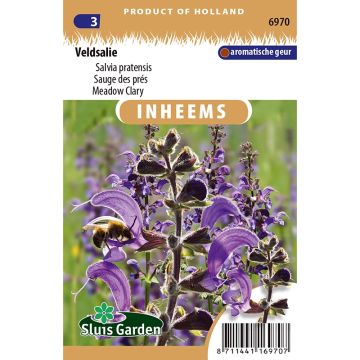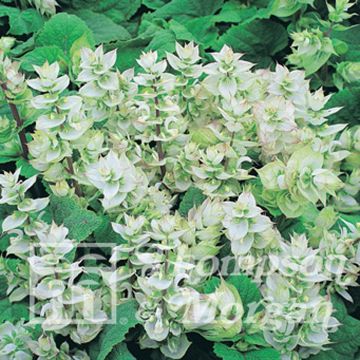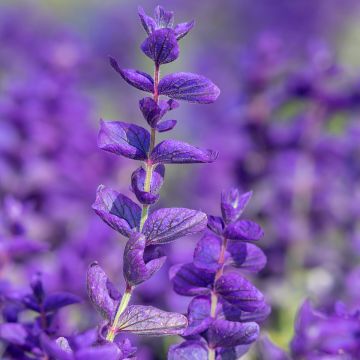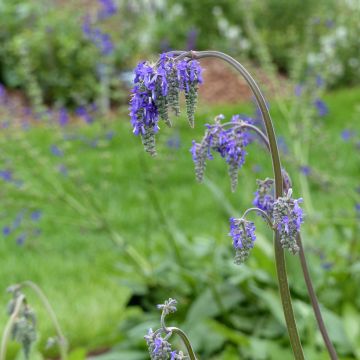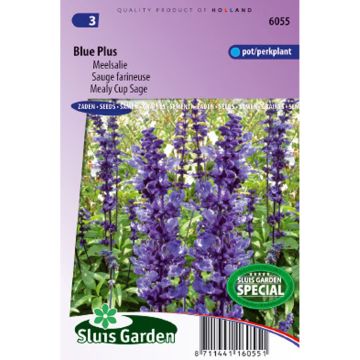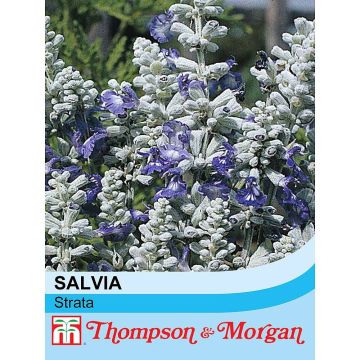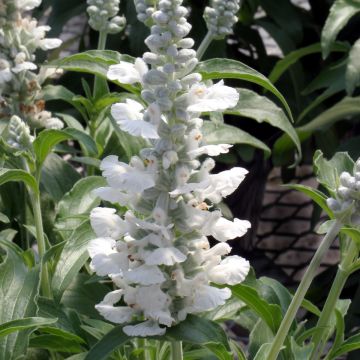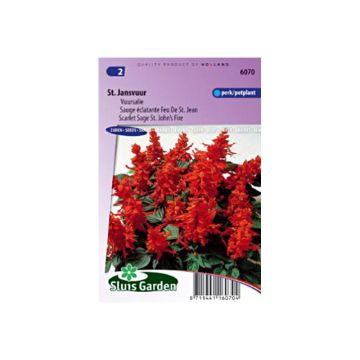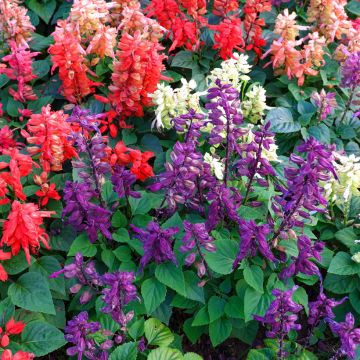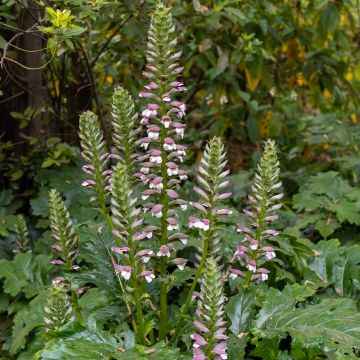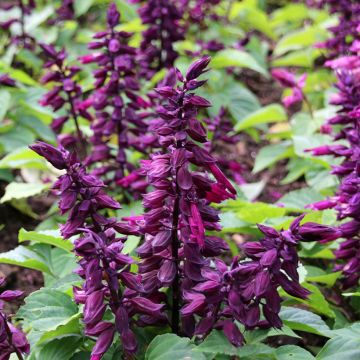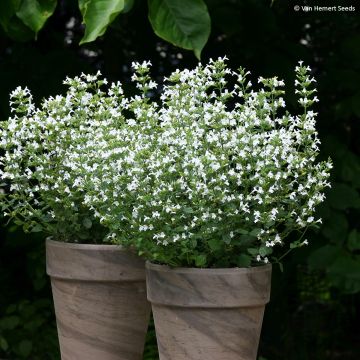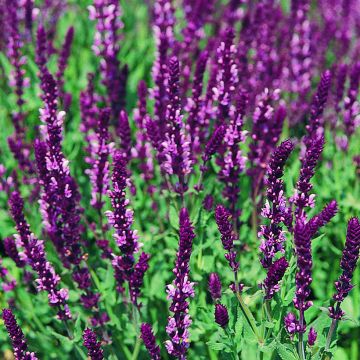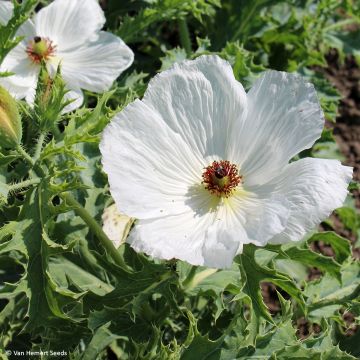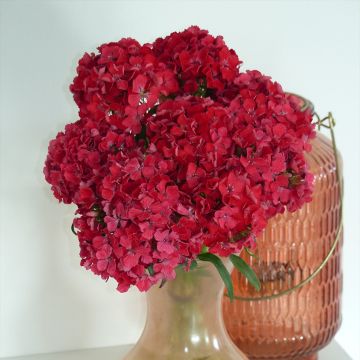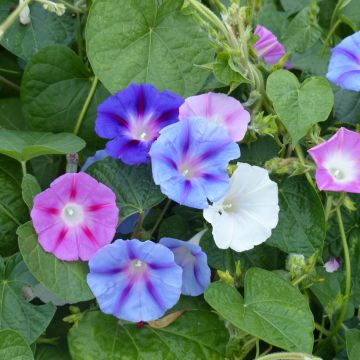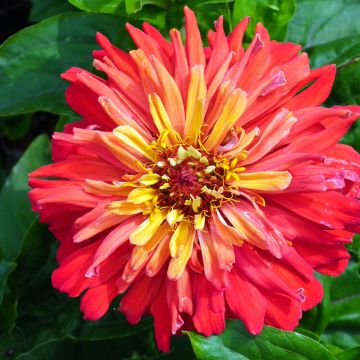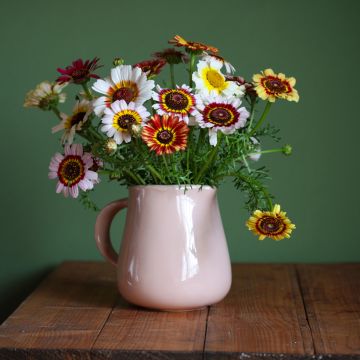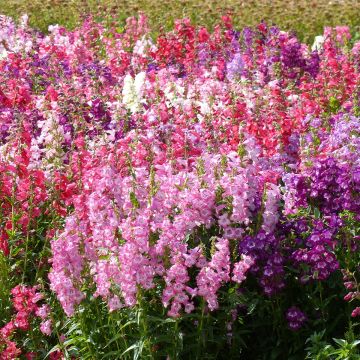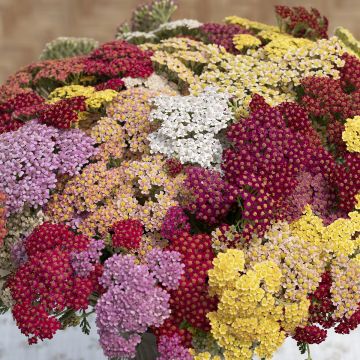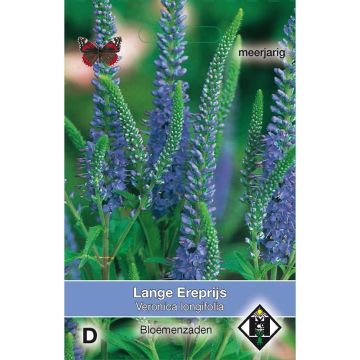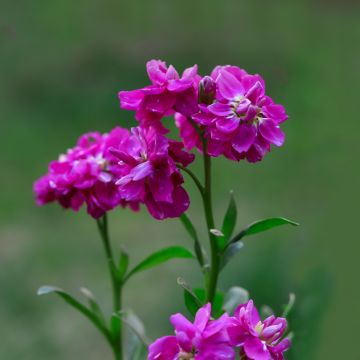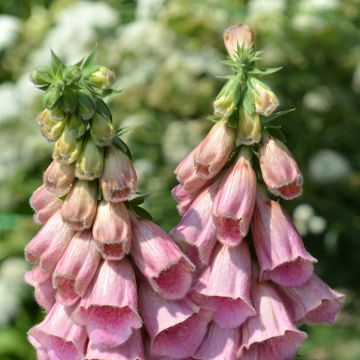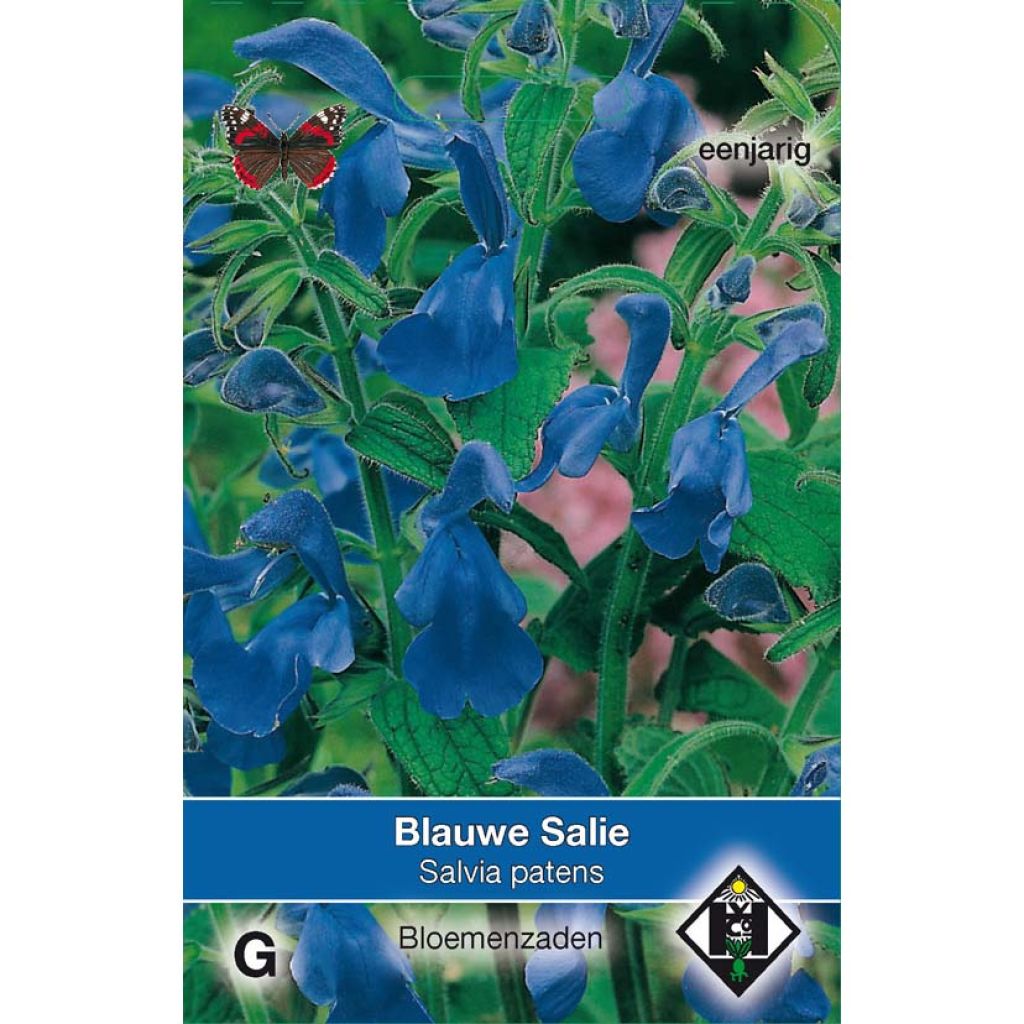

Salvia patens Seeds - Gentian Sage
Salvia patens Seeds - Gentian Sage
Salvia patens
Gentian Sage
The result is beautiful, all summer long beautiful blue flowers on tall stems and even potted plants survived the winter. Unfortunately, no seeds for sale in 2024, maybe next year? Sorry for not being able to change my previous review.
Jean-François, 22/09/2024
Why not try an alternative variety in stock?
View all →This plant carries a 6 months recovery warranty
More information
We guarantee the quality of our plants for a full growing cycle, and will replace at our expense any plant that fails to recover under normal climatic and planting conditions.
Seed-only orders are dispatched by sealed envelope. The delivery charge for seed-only orders is €3.90.
Delivery to Corse prohibited: UE law prohibits the import of this plant from mainland France to Corse as part of the fight against Xylella fastidiosa. Please accept our sincere apologies.
More information
Does this plant fit my garden?
Set up your Plantfit profile →
Description
Sensitive to frost, this beautiful sage, also called Salvia patens, is a tuberous perennial of Mexican origin is often grown as an annual in our climates. Still the incredible true blue colour to which it's name Gentian Sage pertains to, of its large, typically shaped flowers fully justifies growing it in any garden. The blooms of this sage brings out and energizes beds, while its resistance to heat and drought make it an ideal candidate for containers. It shows rapid growth and prefers rich, well-drained soils and full sun.
Salvia patens is a plant of the Lamiaceae family, like all other sage plants. It is a perennial with an upright growth habit that reaches 60 to 80 cm high and 45 cm wide. Its stems bear large, opposite, pubescent, triangular, green leaves. It flowers in the first year from seed. The inflorescences appear from July to October, but it is in September that it flowers the most. The flowers are grouped in clusters, at the tips of the apical stems. The flowers are 2-3 cm long and are rather large compared to those of most other sage. They are arranged in pairs along the stem, and display an intense, pure 'true blue' colour that can be seen from far away. The flowers are nectar-rich and melliferous, providing nourishment for numerous foraging insects. The root of Salvia patens from which it develops, is thick and tuberous. It is self-seeds easily in light, well-drained soil.
Gentian sage is an ideal plant for sunny flowerbeds. The blue colour of its flowers blends well with the intensely pink flowers of Salvia microphylla, whose beauty climaxes in September. It can also be interesting to combine it with asters and grey foliages (Armoise, Senecio vira-vira...) that require rather similar growing conditions.
Report an error about the product description
Flowering
Foliage
Plant habit
Botanical data
Salvia
patens
Lamiaceae
Gentian Sage
Central America
Other Salvia seeds
Planting and care
Sowing advice: Sow from February to June or from September to October.
Sow the seeds on the surface of moistened, well-drained good quality growing medium. Cover with a thin layer of vermiculite or compost. Seal tightly in a plastic bag and keep at a temperature of 15 to 20° until germination, which will take about 1 to 3 months. Expose to light as this will facilitate germination.
Transplant the plants, when they are big enough to be handled, into 7.5 cm diameter pots. Grow them in a cool place for 10 to 15 days before planting them outdoors after any risk of frost has passed, spacing them 45 cm apart.
In September - October, sow under cover and transplant the young plants outside the following spring. Avoid cold positions with wet soils during the winter.
Growing advice:
Salvia patens requires a very sunny location to flower. Its tuberous root enables it to withstand heat and drought, but also makes the plant sensitive to winter humidity. Gentian sage is planted in spring in fairly rich, perfectly drained, neutral soil. It blooms more generously when fertilizer is applied every fortnight in summer. Removing wilted flower stems prolongs flowering.
In regions where winters are harsher, it is cultivated as an annual. It is possible to lift the tubers from the soil and overwinter them like those of Dahlia. In milder regions, its survival in winter depends mainly on how well the soil is drained. In this scenario, the plant benefits from being cut down to the ground in the spring. It produces new, vigorous shoots and will flower earlier than plants grown as annuals.
To increase the hardiness of this sage, it is advisable to spread a good layer of coarse sand or gravel at the bottom of the planting hole (40 cm deep). To prevent the clump from receiving too much moisture in the winter, it can be covered with a mulch of dead leaves, protected by a 'roof' made of a large tile, Plexiglas, or any other waterproof material, that will be held well above the pile of leaves to allow for ventilation. With this technique, the plant will be able to withstand -12 °C.
In containers, the gentian sage requires a sufficient volume of soil to develop its roots. Choose a 20-30 litres pot that can be stored in a cool, dry, frost-free place in winter. Water with a fertilizer every fortnight in summer to sustain blooming.
Sowing period
Intended location
-
, onOrder confirmed
Reply from on Promesse de fleurs
Flower seeds
Haven't found what you were looking for?
Hardiness is the lowest winter temperature a plant can endure without suffering serious damage or even dying. However, hardiness is affected by location (a sheltered area, such as a patio), protection (winter cover) and soil type (hardiness is improved by well-drained soil).

Photo Sharing Terms & Conditions
In order to encourage gardeners to interact and share their experiences, Promesse de fleurs offers various media enabling content to be uploaded onto its Site - in particular via the ‘Photo sharing’ module.
The User agrees to refrain from:
- Posting any content that is illegal, prejudicial, insulting, racist, inciteful to hatred, revisionist, contrary to public decency, that infringes on privacy or on the privacy rights of third parties, in particular the publicity rights of persons and goods, intellectual property rights, or the right to privacy.
- Submitting content on behalf of a third party;
- Impersonate the identity of a third party and/or publish any personal information about a third party;
In general, the User undertakes to refrain from any unethical behaviour.
All Content (in particular text, comments, files, images, photos, videos, creative works, etc.), which may be subject to property or intellectual property rights, image or other private rights, shall remain the property of the User, subject to the limited rights granted by the terms of the licence granted by Promesse de fleurs as stated below. Users are at liberty to publish or not to publish such Content on the Site, notably via the ‘Photo Sharing’ facility, and accept that this Content shall be made public and freely accessible, notably on the Internet.
Users further acknowledge, undertake to have ,and guarantee that they hold all necessary rights and permissions to publish such material on the Site, in particular with regard to the legislation in force pertaining to any privacy, property, intellectual property, image, or contractual rights, or rights of any other nature. By publishing such Content on the Site, Users acknowledge accepting full liability as publishers of the Content within the meaning of the law, and grant Promesse de fleurs, free of charge, an inclusive, worldwide licence for the said Content for the entire duration of its publication, including all reproduction, representation, up/downloading, displaying, performing, transmission, and storage rights.
Users also grant permission for their name to be linked to the Content and accept that this link may not always be made available.
By engaging in posting material, Users consent to their Content becoming automatically accessible on the Internet, in particular on other sites and/or blogs and/or web pages of the Promesse de fleurs site, including in particular social pages and the Promesse de fleurs catalogue.
Users may secure the removal of entrusted content free of charge by issuing a simple request via our contact form.
The flowering period indicated on our website applies to countries and regions located in USDA zone 8 (France, the United Kingdom, Ireland, the Netherlands, etc.)
It will vary according to where you live:
- In zones 9 to 10 (Italy, Spain, Greece, etc.), flowering will occur about 2 to 4 weeks earlier.
- In zones 6 to 7 (Germany, Poland, Slovenia, and lower mountainous regions), flowering will be delayed by 2 to 3 weeks.
- In zone 5 (Central Europe, Scandinavia), blooming will be delayed by 3 to 5 weeks.
In temperate climates, pruning of spring-flowering shrubs (forsythia, spireas, etc.) should be done just after flowering.
Pruning of summer-flowering shrubs (Indian Lilac, Perovskia, etc.) can be done in winter or spring.
In cold regions as well as with frost-sensitive plants, avoid pruning too early when severe frosts may still occur.
The planting period indicated on our website applies to countries and regions located in USDA zone 8 (France, United Kingdom, Ireland, Netherlands).
It will vary according to where you live:
- In Mediterranean zones (Marseille, Madrid, Milan, etc.), autumn and winter are the best planting periods.
- In continental zones (Strasbourg, Munich, Vienna, etc.), delay planting by 2 to 3 weeks in spring and bring it forward by 2 to 4 weeks in autumn.
- In mountainous regions (the Alps, Pyrenees, Carpathians, etc.), it is best to plant in late spring (May-June) or late summer (August-September).
The harvesting period indicated on our website applies to countries and regions in USDA zone 8 (France, England, Ireland, the Netherlands).
In colder areas (Scandinavia, Poland, Austria...) fruit and vegetable harvests are likely to be delayed by 3-4 weeks.
In warmer areas (Italy, Spain, Greece, etc.), harvesting will probably take place earlier, depending on weather conditions.
The sowing periods indicated on our website apply to countries and regions within USDA Zone 8 (France, UK, Ireland, Netherlands).
In colder areas (Scandinavia, Poland, Austria...), delay any outdoor sowing by 3-4 weeks, or sow under glass.
In warmer climes (Italy, Spain, Greece, etc.), bring outdoor sowing forward by a few weeks.

































